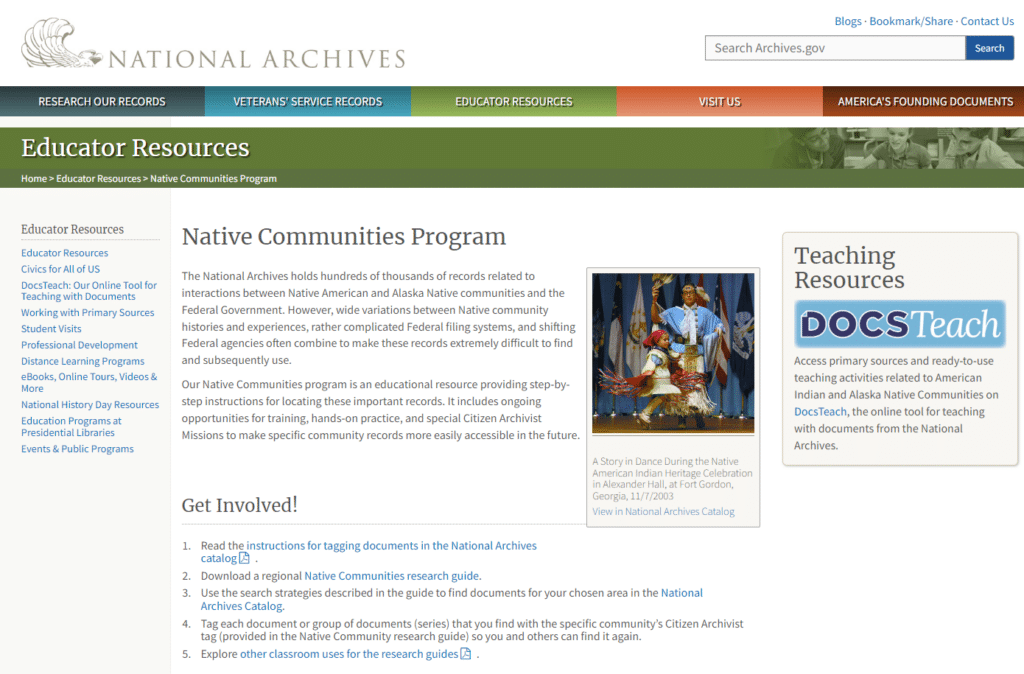Educator Resources on Indigenous History
Frequently Asked Questions
Whether it’s your first time teaching the history of Native peoples or you’ve been teaching for years, these resources will answer common questions and lay a basic groundwork for teaching Indigenous history.
The National Museum of the American Indian FAQ page covers terminology, Native perspectives on Thanksgiving, tribal sovereignty and recognition, cultural awareness and sensitivity, and many other topics.
Indigenous Storywork is an organization dedicated to helping educators learn about Indigenous cultures and ways of knowing, and particularly to help bring Indigenous stories into classrooms. This guide from Indigenous Storywork includes considerations about story-related terminology, storywork ‘dos’, what to avoid, and determining appropriateness.
Regional Resources
These resources from Connecticut and New York highlight local histories and organizations focused on Indigenous culture. In addition to the resources listed below, try checking with museums, educational organizations, and PBS station websites in your area for more local histories.
Teach It is a Connecticut-based project that provides inquiry-based activities that coordinate with the learning principles found in the state social studies frameworks. These exercises contain grade-specific content meant to help educators incorporate Connecticut Indigenous history into the classroom.
The Connecticut State Department of Education offers this professional development “playlist” of resources to help educators get informed about the Indigenous history of Connecticut.
The Gilder Lehrman Institute features many resources for helping students learn about American history, including their guide to learning about Columbus Day and Indigenous Peoples’ Day, which includes primary sources, suggested readings, videos, and lesson plans.
This is one example of a local PBS station that has collected resources for educators about Indigenous history. Their website provides information about a variety of Indigenous topics for a variety of grade levels, and lists resources including books, videos, activities, and museums to visit.
Broader Resources
Many national history and educational organizations have materials about Indigenous history and culture. Some of these are connected to the United States government, like the Library of Congress and the National Archives and Records Administration. While these resources are not as locally specific, they offer a wealth of information about Indigenous history and culture.

The National Archives and Records Administration, also known as NARA or the National Archives, is the repository for preserved government records. Their Native Communities program is an educational resource that provides step-by-step instructions for locating important records related to interactions between Native Peoples and the U.S. government.
The Library of Congress has a number of research guides relating to Indigenous history and culture, including a guide specifically for educators using U.S. Poet Laureate Joy Harjo’s signature project, “Living Nations, Living Words,” in the classroom.
The National Education Association has a collection of resources for educators, including lesson plans and webinars, book recommendations, and a guide to speaking respectfully with and about Native Peoples.
The National Museum of the American Indian, which is associated with Smithsonian Institution, offers many resources that provide educators and students with new perspectives on Indigenous history and cultures. Their Native Knowledge 360° initiative is an extensive collection of professional development resources, virtual field trips, digital museum collections, and much more.

